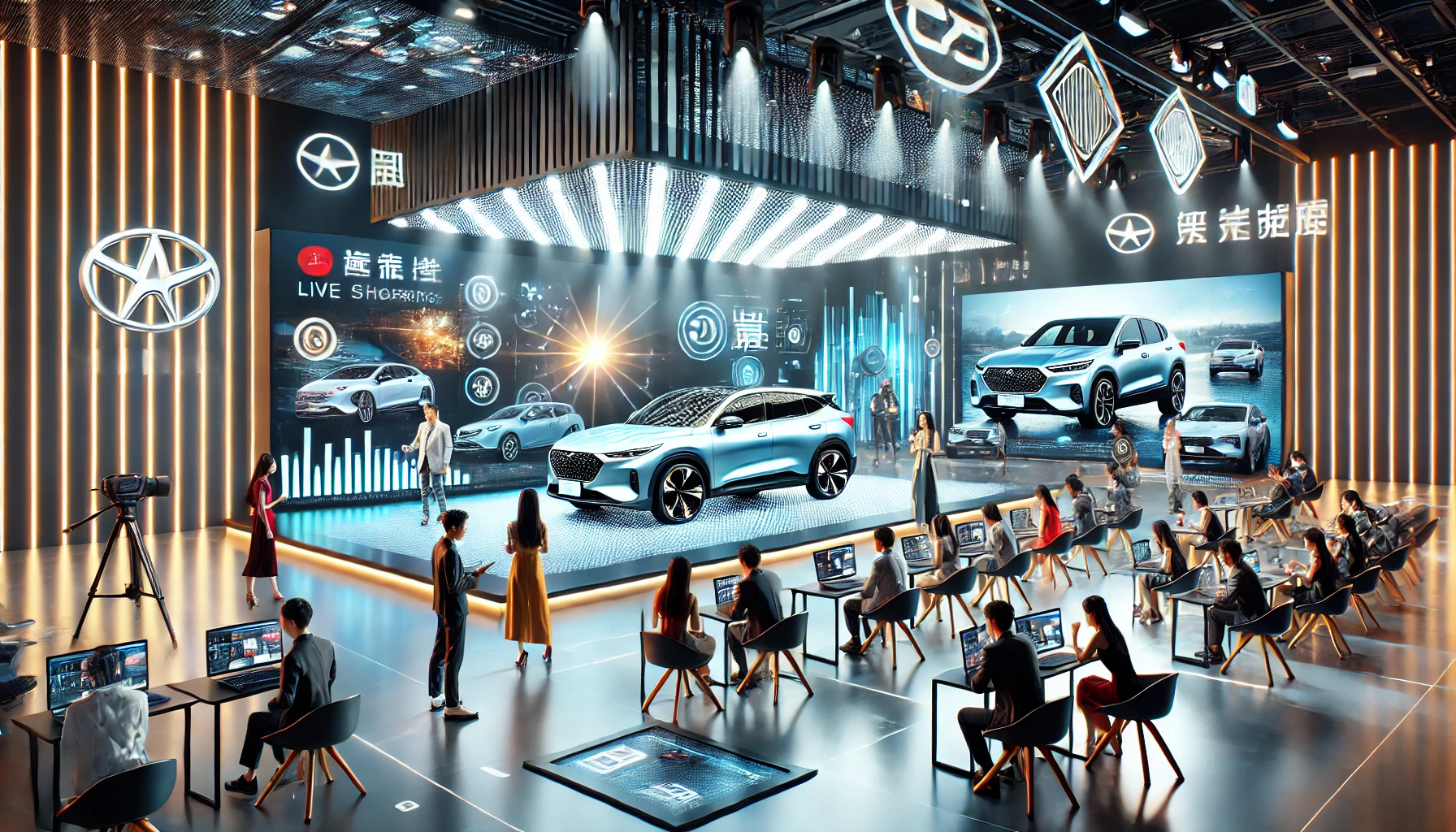
In a dramatic shift spurred by the fierce competition in China’s automotive sector, veteran executives from established car companies are increasingly turning to livestreaming to promote sales. This trend highlights a convergence of traditional automotive expertise with modern digital marketing strategies, aiming to captivate a broader audience and boost sales in the world’s largest car market.
Over recent months, the jeans-and-jacket-clad CEOs of electric vehicle (EV) startups have been joined on the livestreaming stage by seasoned executives from traditional automakers, including conservative, state-owned enterprises. These middle-aged, tie-wearing veterans are stepping out of their corporate comfort zones to engage directly with consumers online.
Livestreaming allows these companies to present their vehicles’ technology and performance more personally and dynamically, circumventing the traditional, often costly, advertising routes. This approach provides potential buyers with an unfiltered, real-time look at what these cars can offer.
“If you’re not livestreaming these days, you’re kind of a dinosaur,” said Mark Tanner, managing director of Shanghai-based marketing firm China Skinny. “Coming up with something novel and exclusive, especially from respected industry veterans, and delivering it through the convenience of a phone screen can be a significant draw.”
| Benefit | Description |
|---|---|
| Direct Customer Interaction | Companies can engage with potential buyers in real-time, answering questions and showcasing features without intermediaries. |
| Cost-Effective Marketing | Livestreaming reduces reliance on traditional, expensive advertising channels, making it a cost-efficient promotional strategy. |
| Showcase Technology and Performance | Executives can demonstrate a vehicle’s capabilities, such as driving range and autonomous features, directly to an interested audience. |
| Personalized Engagement | The personal touch provided by executives themselves, often during live road trips, adds authenticity and a human element to the brand’s outreach efforts. |
| Appeal to Younger Consumers | Adopting modern, tech-savvy methods helps legacy automakers connect with younger demographics who prefer digital interactions. |
This strategy echoes the playbook of Tesla Inc., which has long championed a direct sales model. Tesla’s approach hinges on fostering close relationships between the brand, its CEO Elon Musk, and its customers through the Tesla app, social media, and other online platforms.
Tesla’s success has set a precedent for the automotive industry, encouraging both new and traditional players to adopt similar tactics to remain competitive. The influence is evident as companies strive to blend the intimacy and immediacy of livestreaming with the authoritative presence of their leadership.
A distinctive trend within this livestreaming surge is the increasing personalization of content. Executives are not just sitting behind desks; they are hitting the road in their vehicles, often embarking on extensive journeys. These real-time demonstrations allow potential customers to observe the cars’ performance under various conditions, addressing common concerns about driving range and autonomous capabilities.
- Lei Jun of Xiaomi Corp: With nearly 24 million followers on Weibo, Lei Jun has become a prominent figure in the livestreaming arena. His introduction of the Xiaomi SU7 EV in March captivated tens of millions of viewers, leading to the shipment of approximately 20,000 units. His subsequent livestreams, including a 3.5-hour session showcasing the car’s autonomous driving features between Shanghai and Hangzhou, amassed 39 million views.
- William Li of Nio Inc: Known for his cross-country road trips in Nio cars, Li has garnered a follower base of around 600,000 on Weibo. His hands-on approach in showcasing Nio’s technology and performance has resonated well with his audience, emphasizing the value of direct engagement from leadership.
The wave of livestreaming has swept across legacy automakers as well. Traditionally reserved leaders like Li Shufu of Zhejiang Geely Holding Group Co and Wei Jianjun of Great Wall Motor are now stepping into the digital spotlight. Wei’s inaugural livestream highlighted Great Wall Motor’s advanced driving-assistance features, marking a significant shift in how these companies interact with their audience.
Executives from state-owned giants are also embracing the trend. Guangzhou Automobile Group Co’s recent debut on Weibo saw the company’s top executives, including President Feng Xingya and Gu Huinan, head of EV brand Aion, making their foray into livestreaming. Despite some initial awkwardness, their efforts are bolstered by creative editing, such as incorporating greetings from celebrities like former NBA player Yi Jianlian.
Gu Huinan emphasized the newfound openness and connectivity this platform provides. “In the past, people in the industry thought we are a little bit reserved,” Gu said during a recent auto forum panel discussion. “This kind of platform gives us direct interaction with our users. They know what we think, and we know what they want.”
Transitioning from boardroom formality to the vibrant and unfiltered world of livestreaming is not without its challenges. Executives must adapt to this new medium, learning to present themselves and their products in a way that resonates with online audiences.
- Adapting to Informal Presentation: Leaders accustomed to formal settings must learn to engage in a more relaxed and personable manner.
- Mastering Digital Tools: Executives need to familiarize themselves with livestreaming technology and social media dynamics.
- Maintaining Authenticity: Striking a balance between professional expertise and relatable communication is crucial for effective engagement.
Yin Tongyue, chairman of Chery Automobile Co, has recently taken up livestreaming. His efforts underscore the necessity for even seasoned veterans to adapt to digital trends. “Even a 60-year-old man like me has to do this,” Yin noted, highlighting the industry’s shift towards a more interactive and personal approach.
As China’s automotive market grows increasingly competitive, the integration of livestreaming into marketing strategies represents a significant evolution. This approach not only modernizes the way cars are sold but also bridges the gap between traditional automotive leadership and the digital-savvy consumer base.
The trend of livestreaming is set to redefine how companies connect with their audience, offering a blend of authenticity, direct engagement, and cost-effective marketing. For automakers, embracing this change is not just about staying relevant; it’s about leading the way in an industry that continues to innovate and evolve.
Related News:
Featured Image courtesy of DALL-E by ChatGPT
